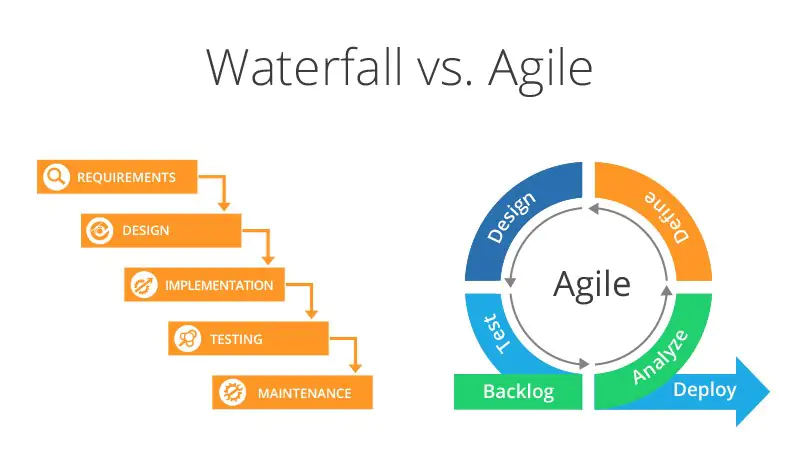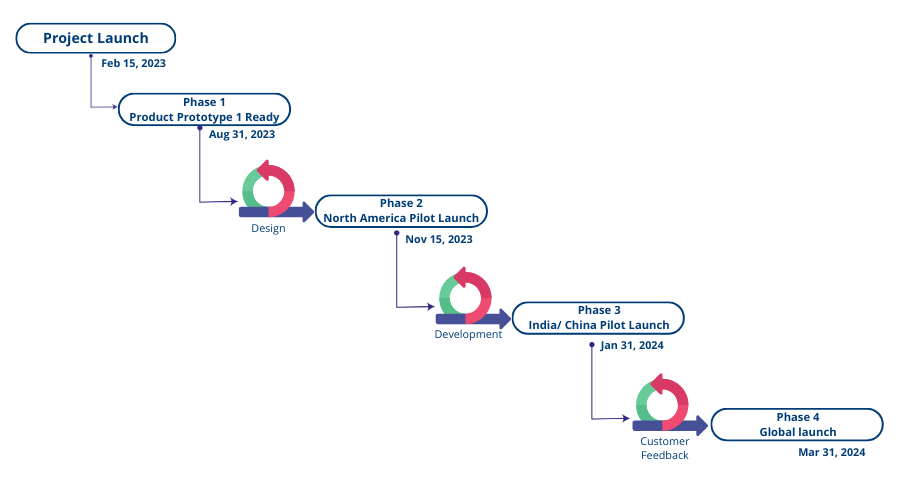When the Agile methodology was first introduced, it was embraced as a welcome replacement to the rigid Waterfall approach. The community largely accepted Agile and Waterfall as mutually exclusive project management paradigms. This led to segmented fractions in the community, where either side presented opposing views with skepticism. Critics of Agile believed that Agile simply translates into fast failure. Critics of Waterfall believed that the world for a phase-gated and static project management style no longer exists.

Over the years, the idea of operating a lean enterprise in a competitive and fast-paced business environment has led progressive organizations to adopt the Agile framework. In practice however, many organizations are forced to continue operating under the assumptions and guidelines of the traditional phase-gated waterfall project management framework. Adopting Agile requires change in culture, mindset and operational processes. Due to strong resistance against such changes even among organizations claiming to adopt pure Agile, there may exist as many flavors of Agile as the organizations adopting them.
In this blog, we will highlight the differences between the Agile and Waterfall methodology and discuss how the Hybrid Agile paradigm has emerged as a result.
So, what is the Waterfall methodology for project management?
Waterfall methodology refers to the sequential phase-gated project management workflow. Similar to a waterfall, the workflow processes cascade downward linearly across sequential stages or phases of the project lifecycle. It is a rigorous and systematic approach of breaking down complex projects into task segments that can be structured independently and comprehensively in multiple stages as follows:
• Requirements: High-level objectives that can be implemented in many different ways.
• Design: An implementation solution that aims to optimally realize these objectives.
• Implementation: Execution of the candidate design solution.
• Verification or Testing: Evaluating whether the implemented design solution validates the intended objectives stated in the requirements document.
• Deployment or Maintenance: Implementing strategies to resolve defects, process change requests and follow up on customer feedback to ensure optimal performance.
The structured waterfall project management methodology fills a key gap in management: project organization and execution. The sequential process provides a linear and well-defined approach to realizing known task objectives. Comprehensive requirements and design documentation provide a high level of predictability and control. Risks are identified and mitigated early during the project lifecycle, which allows teams to comply with stringent compliance regulations and organizational policies across the project lifecycle.
Now, let’s discuss how the Agile project management framework is different.
Agile refers to the overarching project management paradigm focused on continuous development, improvement and collaboration. An Agile framework follows iterative development cycles of planning, execution and evaluation, called Sprints. One of the key ideas behind Agile is to deliver high-quality and working software products quickly. Early and continuous delivery of software builds as part of an Agile framework allow development teams to incorporate changing requirements and maintain customer satisfaction. This is achieved by prioritizing authentic human interactions and collaborative ideas over structured framework processes, unlike the Waterfall methodology. Let’s summarize the key elements of the Agile methodology in comparison with the traditional Waterfall approach:
• Dynamic and change-oriented approach instead of a static, rigid and structured project lifecycle.
• High quality and working software to solve a customer problem through simplified processes, instead of maintaining detailed documentation.
• Continuous interactions and collaborations among individuals instead of adopting rigid processes and tools.
• Short, iterative development cycles with continuous feedback from customers and end-users to guide future development toward high-quality products based on changing requirements.
This comparison demonstrates that both the traditional Waterfall approach and the modern Agile project management methodologies have their use cases. The Waterfall framework is suitable for highly regulated industries where teams must follow well-defined requirements and ensure strict regulatory compliance. These are typical for large-scale projects with fixed budgets, timeline and expectations. The Agile methodology is more suitable for consumer-centric projects in the digital age, where the market landscape evolves rapidly, requirements are dynamic, project assignments tend to be complex and the end-user feedback may be unpredictable.
In the real-world, however, organizations tend to optimize their project management capabilities in order to maximize profitability and business success. And even though teams may be inclined to adopt Waterfall or Agile consistently across all projects, a combination of Agile and traditional project management frameworks often promises the most optimal outcome. For instance, the structured waterfall approach may be more productive for repetitive assignments with predictable results. Agile may be more suitable for complex assignments. The 17th State of Agile report verifies this sentiment:
• Agile adoption is up by 16% since 2022. In fact, large organizations that typically follow structured and systematic project management approaches are leading the Agile adoption increase at twice the rate of their smaller counterparts (14% to 7%).
• End customer satisfaction is a top priority according to 43% of the respondents. However, team performance is measured by vastly different metrics: 36% evaluate sprint velocity, 29% evaluate value delivered and 25% focus on the Sprint burndown chart. These goals are likely achieved by adopting a flexible Agile approach.
Following the report, and according to the observation of a notable software engineering scholar and academic Bertrand Meyer, it seems evident that Agile is not necessarily seen as a negation of the traditional waterfall approach. Instead, organizations tend to adopt a subset of guidelines from both Agile and Waterfall, while rejecting the ones that do not comply with their organizational culture and business requirements, according to Meyer in his article, “Making Sense of Agile Methods”. This naturally means that in practice, there exist as many flavors of Agile, as the organizations adopting them. This has ultimately given rise to Hybrid Agile, an optimal mix of both Agile and traditional project management methodologies based on business objectives and value. Consider the following examples of a Hybrid Agile approach to project management:
• Philips adopted a flexible Agile framework with a predictable systematic approach inspired by the traditional Waterfall method for developing its HealthSuite digital platform. This approach resulted in faster delivery of a high-quality software product (inspired by Agile) as teams maintained extensive documentation and compliance guidelines (inspired by Waterfall).
• Tesla adopts rigorous risk assessment mitigation strategies (inspired by Waterfall) while following a flexible Hybrid Agile project management framework. This has allowed the car manufacturer to maximize production volumes (inspired by Agile) while minimizing risks associated with shipping innovative new autonomous driving capabilities to the market.
Another recent research study further validates these observations: according to the survey of 700 projects across multiple industry verticals, 66% of the organizations adopt a hybrid mix of Agile and traditional approaches, but only 6% adopt a project management framework without any element of the Agile methodology. The distribution skews toward frequent adoption of Agile principles, with some Waterfall guidelines to meet organization-specific requirements as shown in the table below:
In summary, the balanced approach of a Hybrid Agile methodology can take various forms. A highly regulated project may adopt Waterfall characteristics of the phase-gated approach. A complex project may take advantage of the short iterative and continuous development sprints from the Agile methodology. The real-world constraints and expectations have nevertheless encouraged teams to adopt a hybrid mix – one that works best for their unique requirements. In most cases, this has resulted in the rise of a Hybrid Agile project management framework.
Nimble Hybrid Agile empowers teams to seamlessly implement Hybrid Agile projects by combining the flexibility of Agile methodologies with the structured approach of traditional project management, ensuring adaptability and efficiency throughout the project lifecycle. Signup for a Free trial.










